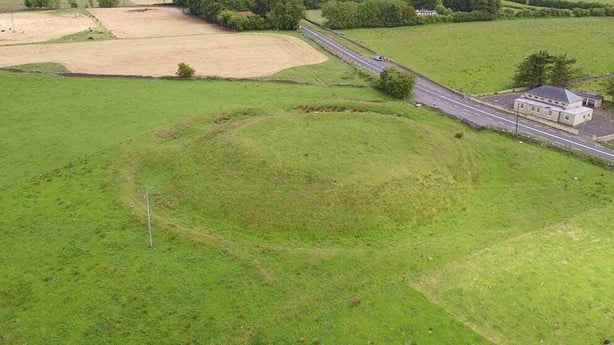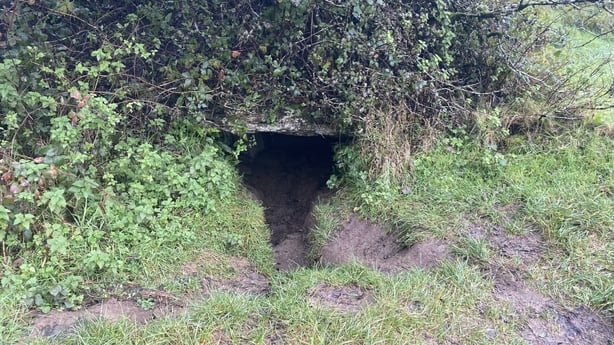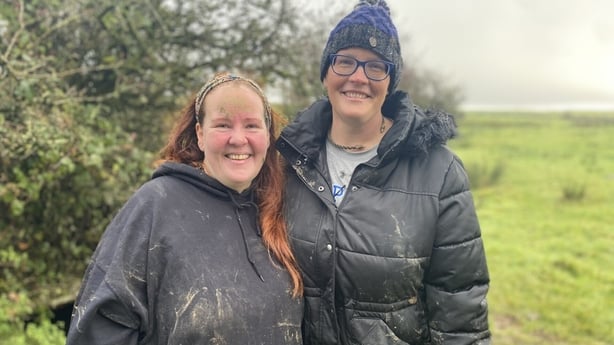Preparations are under way across the country for Halloween, but where exactly did Samhain or Halloween originate? Some believe it all began in Co Roscommon.
31 October marks the celebration of Samhain or Halloween, one of the four major pre-Christian Gaelic Pagan Festivals along with Bealtaine, Lughnasadh and Imbolc.
Rathcroghan in Co Roscommon was a royal settlement and a key venue for festivals celebrating the different seasons and Rathcroghan Visitor Centre, in the village of Tulsk, is home to the famous 'Origins of Samhain' tour.
It is suggested Samhain in particular was celebrated at the Roscommon site with activity focused on its elevated temple which was surrounded by burial grounds.
Spread across more than two square miles of rich agricultural land, Rathcroghan encompasses 250 archaeological sites, dating back 5,500 years.
They include burial mounds, ring forts, standing stones, linear earthworks, an Iron Age ritual sanctuary and the cave of Oweynagat (Uaimh na gCat, meaning cave of the cats), once known as Ireland's "gate to hell", which would open during the festival of Samhain.

It was here 2,000 years ago where the festival of Samhain was born, according to historian and manager of Rathcroghan Visitor Centre Dr Daniel Curley.
Dr Curley explained: "It's part natural, part man-made cave and it is replete with stories from the early medieval literature from about a thousand years ago.
"Halloween is the modern celebration of Samhain, a time of year when it was believed the invisible wall between the living world and the otherworld disappeared and spirits could walk freely among the living.
"The stories tell us of it being a place where creatures, monsters, manifestations emerged out of the on the last day between autumn and winter.
"A whole host of fearsome otherworldly beasts emerged to ravage the surrounding landscape and make it ready for winter.
"These creatures came out and they basically caused havoc on the land. They allowed for the leaves to fall off the trees, they allowed for the vegetation to stop growing and it was all regulated by a Goddess that resides in the cave.
"Her name is Mórrigan, the Goddess of war and the Mórrigan is the one that rides out on a chariot and brings these creatures out into a mortal plain and that liminal time between autumn and winter and she brings them back down and closes the door at the end of the night."

Dr Curley explained how our ancestors believed this cave was a portal to the Irish otherworld, also known as Tír na nÓg, where time passes at a different pace.
It also has a dark side, and once a year on Halloween that dark side emerges from Oweynagat.
"This place is the entrance to the Irish otherworld, a place that might sound unusual to us we know of it. We know of it as Tír na nÓg, and this is place of never ending quantities of food and where you don't grow old," said Dr Curley.
"And for our ancestors places like Oweynagat were an opportunity to interact with the precincts of this place, much like Brú na Bóinne and Newgrange," he added.
The Cave of Oweynagat is hard to find. It is hidden beneath trees at the end of a one-way, dead-end rural track, yet people have been visiting for 25 years. At this time of year, it is mucky and very dark.
Dr Curley said: "We've got a very sensitive archaeological site within a rural community that we're trying to work alongside and maintain.
"We have a huge amount of enquiries but we have to try and limit the number of guided tours so we can make sure that this place survives for the next generation."
The Halloween tours have been booked out for weeks and the tour attracts visitors from all over the world.
Shannon Mullins from North Carolina in the US and Lucy Blackthorn from Alba in Scotland visited this week.
Shannon said: "It's was really beautiful. It's hard to get down there but it was worth it. It's so peaceful and there's a freshness and a cleanness to the air" said Shannon Mullins, after emerging from the cave.
"It's a deep place, it feels like the magic of Ireland. It's that place betwixt and between."

Lucy added: "I don't know how anyone could describe that place as the gates of hell. It's a wonderful place and this a wonderful county."
When asked about the possibility that Halloween or Samhain could have originated elsewhere, Dr Curley pointed to history and mythology.
He said: "I don't argue against the medieval literature from 1,200 years ago and that coupled with all of our archaeological investigations and our understanding of what these literatures mean to us.
"These are our mythologies. These are part of our Christian belief systems albeit with a veiled guise placed upon them but they're telling us what our ancestors believed in some respects.
"You can tell the story of Ireland and how our ancestors understood the world from here.
"This place was obviously a central place to people relating to Samhain, so yes, it all began in Co Roscommon."
In 2021, Ireland applied for UNESCO World status for Rathcroghan. It remains on the organisation's tentative list.






